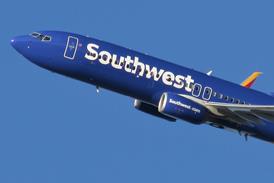Tim Furniss/LONDON
NASA's Deep Space 1 interplanetary space explorer has re-fired its Ion engine after a seven-month space rescue by flight controllers. The craft is now heading towards an encounter with the comet Borrelly in September 2001.
Deep Space 1's star tracker, which is responsible for determining the probe's orientation, ceased operating last November. The craft had successfully completed its primary mission - to demonstrate new technologies for future deep space exploration spacecraft, including an artificial intelligence system.
Engineers restored the craft's flight control by writing new computer programs to use its imaging camera for orientation instead of the star tracker. Deep Space 1 has regained full three-dimensional control by using the camera to take pictures of a reference star.
As the spacecraft rotates and the reference star appears to drift away from the centre of the camera's view, programs analyse the images and determine how to reorientate the craft to bring the star back to its intended location.
Meanwhile, a 20s engine burn by NASA's Near Earth Asteroid Rendezvous (NEAR) spacecraft on 7 July reduced its 50km (30 miles) circular orbit around the asteroid Eros to an elliptical one of 50 x 35km. The orbit will be circularised to 35km on 14 July. Eros is an oblong asteroid, so NEAR will come as close as 19km to some parts of its surface.
After a close survey of the asteroid, NEAR will be boosted back to a 50km circular orbit by two engine burns on 24 and 31 July, followed by two more burns to take the craft out to 100km for a global survey. It is possible that the craft will later be taken into an even closer orbit.
Source: Flight International























